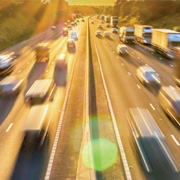
Inspired by the legacy of Gonvarri’s founder, the Emotional Driving program was born to reinforce safer driving through the company’s strategic goals.

Gonvarri is a global company that has always been committed to quality and innovation, which has made it a world reference in the flat steel and aluminum transformation sector. Beyond its activity linked to road safety – it provides metallic solutions for the automotive sector and to improve road safety – it was its commitment to the well-being of its workers and collaborators that led the company to initiate the Emotional Driving project, whose final goal is to improve the way we drive; to make us safer, more aware, more sensitive.
The differential note of this program, however, is not so much in the goal (responsible driving) but in a new approach that makes it unique. Emotional Driving alludes to our emotions, reminds us of universal ethical values and makes us aware of them through positive messages, to which we are more receptive. Instead of using fear or tragedy, Emotional Driving helps us reflect positively on the reasons we all have for driving responsibly and also invites us to share them with our family, friends, co-workers and society in general. And as the campaign has shown over these five years, using optimism and motivation is a more effective way to raise awareness in society as a whole about this problem that affects us all. And it is also more consistent with the company’s philosophy.
The program, which began in December 2014 at Gonvarri Headquarters and quickly spread to the Group’s large national and international family, had an added boost with the publication, in 2016, of the book Emotional Driving: Reflections for an optimistic understanding of road safety. It was, and still is, a reference for all those people who are aware of road safety, both inside and outside the company. Using an essentially personal and thoughtful approach, the book offers numerous testimonies, impressions and experiences of people who want to share their vision and commitment to road safety and responsible driving.
These include the racing champion Carlos Sainz and the presidents of Gonvarri and Gestamp, as well as the Group’s executives and workers, road safety professionals, drivers who have changed their attitude to driving due to a traumatic event, and different foundations and entities linked, to a greater or lesser extent, to the matter of driving.
The book you are reading gives continuity, five years after the birth of Emotional Driving, to the reflections of that first volume. While maintaining the same positive and motivating spirit, as well as collaborations and experiences, messages and attitudes about road safety, this second book includes an important addition, as necessary as it is revealing: the studies on driving habits that have been carried out with different groups both in Spain and in Argentina. Through real data, taken on the ground, on the asphalt, we have learned what the habits are -the manias, the defects, the dangers, the virtues too- of drivers in general, and of young Spaniards in particular, when they sit behind the wheel.
The results are more than significant. And they are the proof that we are on the right track, that the intuition that marked the beginning of this project was right, and that we must continue to explore this new route. In fact, new studies are already underway in the countries where Gonvarri has a presence.
All of this invites us to continue reflecting on the challenges still ahead of us. One of our priorities is to achieve the Sustainable Development Goals passed by the United Nations in September 2015, specifically goal 3.6, to which Gonvarri contributes directly. This goal establishes the need to reduce by half the global number of deaths and injuries caused by road accidents by 2020. Obviously, neither as a company nor as a society have we managed to achieve this number. Therefore, the new challenge that we have set ourselves at Gonvarri is Goal Zero. We still have a long way to go, a road full of difficulties, slopes and winding curves, but we have the best possible vehicle to reach our destination: Emotional Driving.

Prologue

Por favor, gira tu móvil para navegar